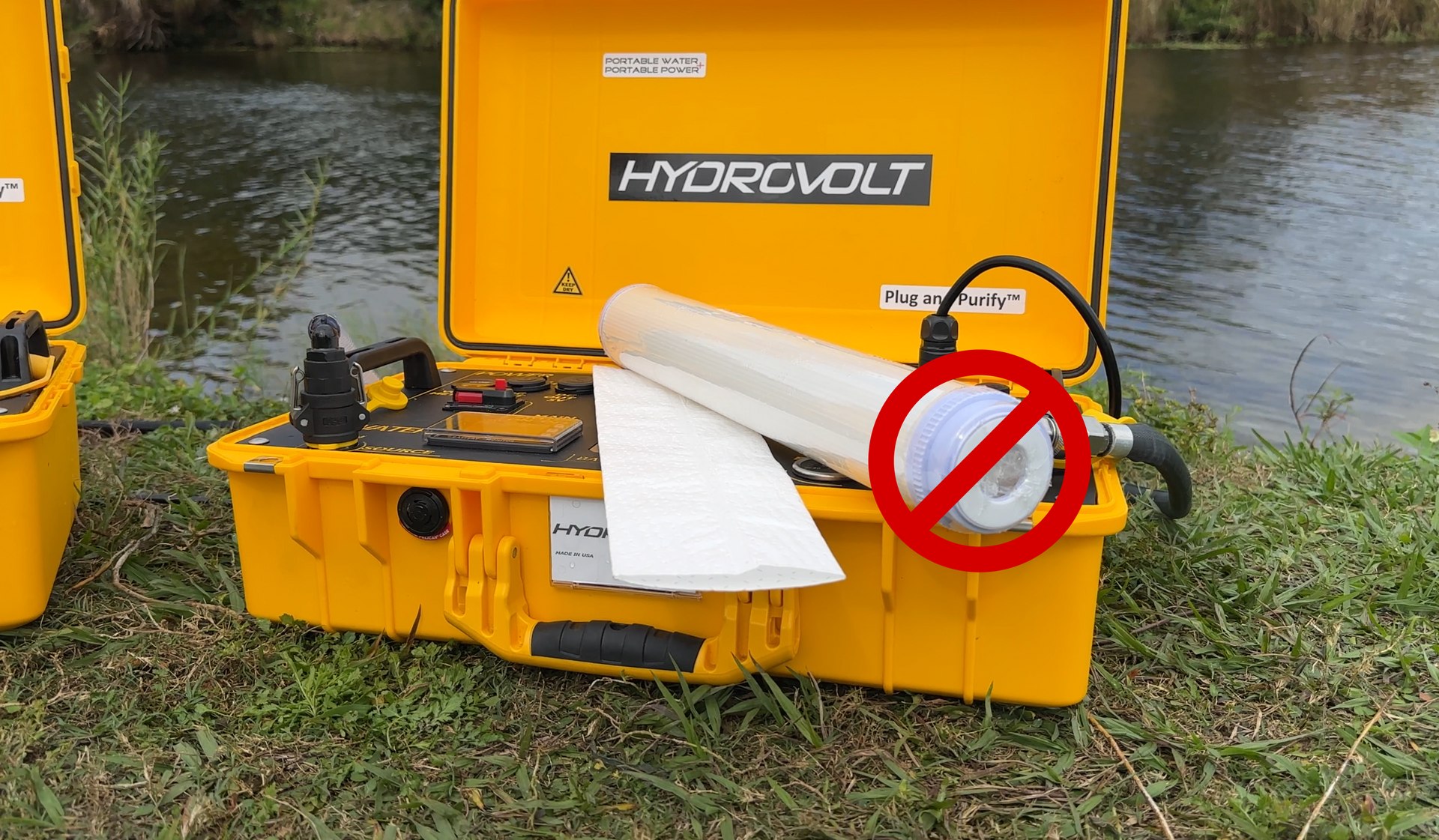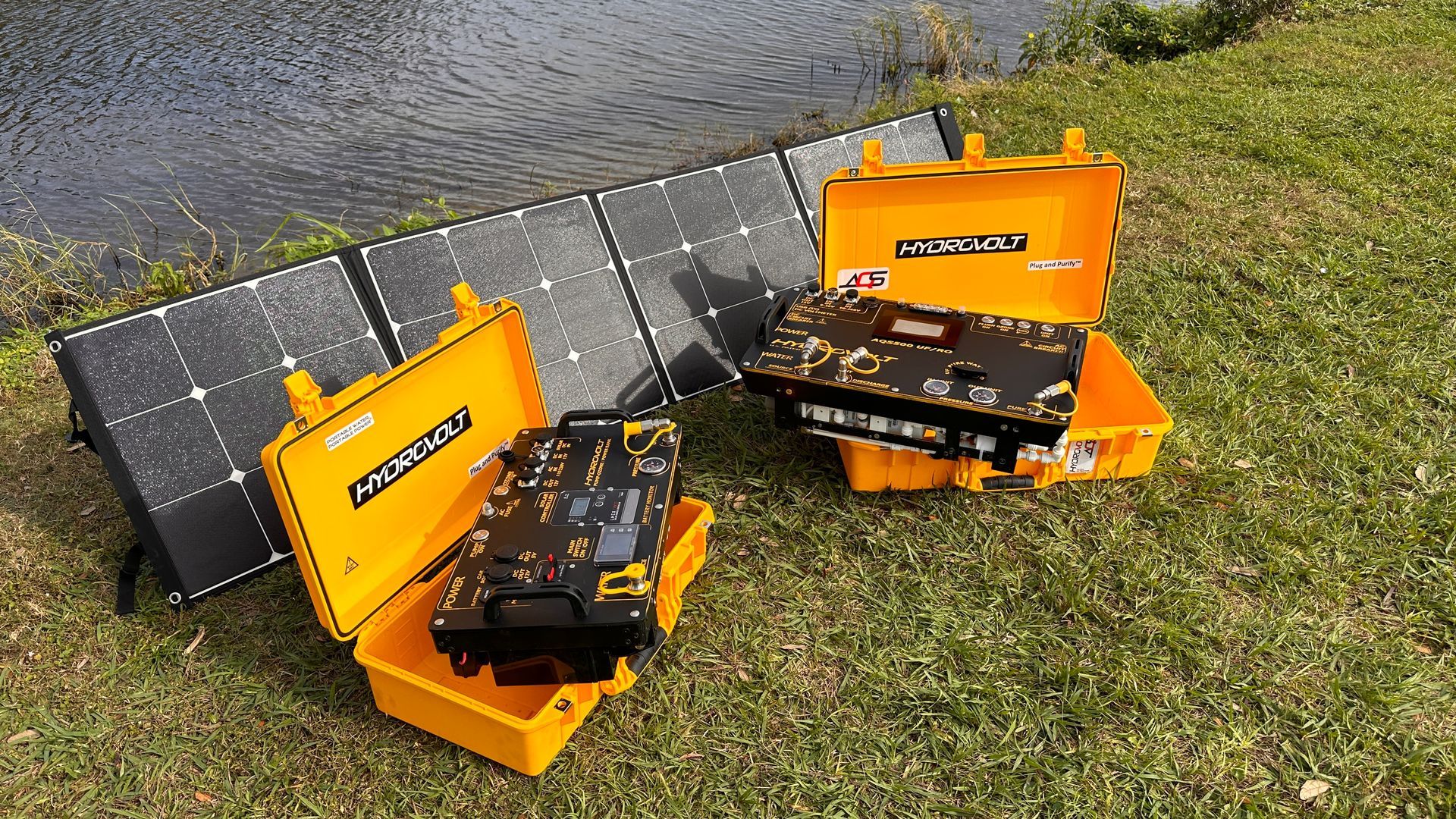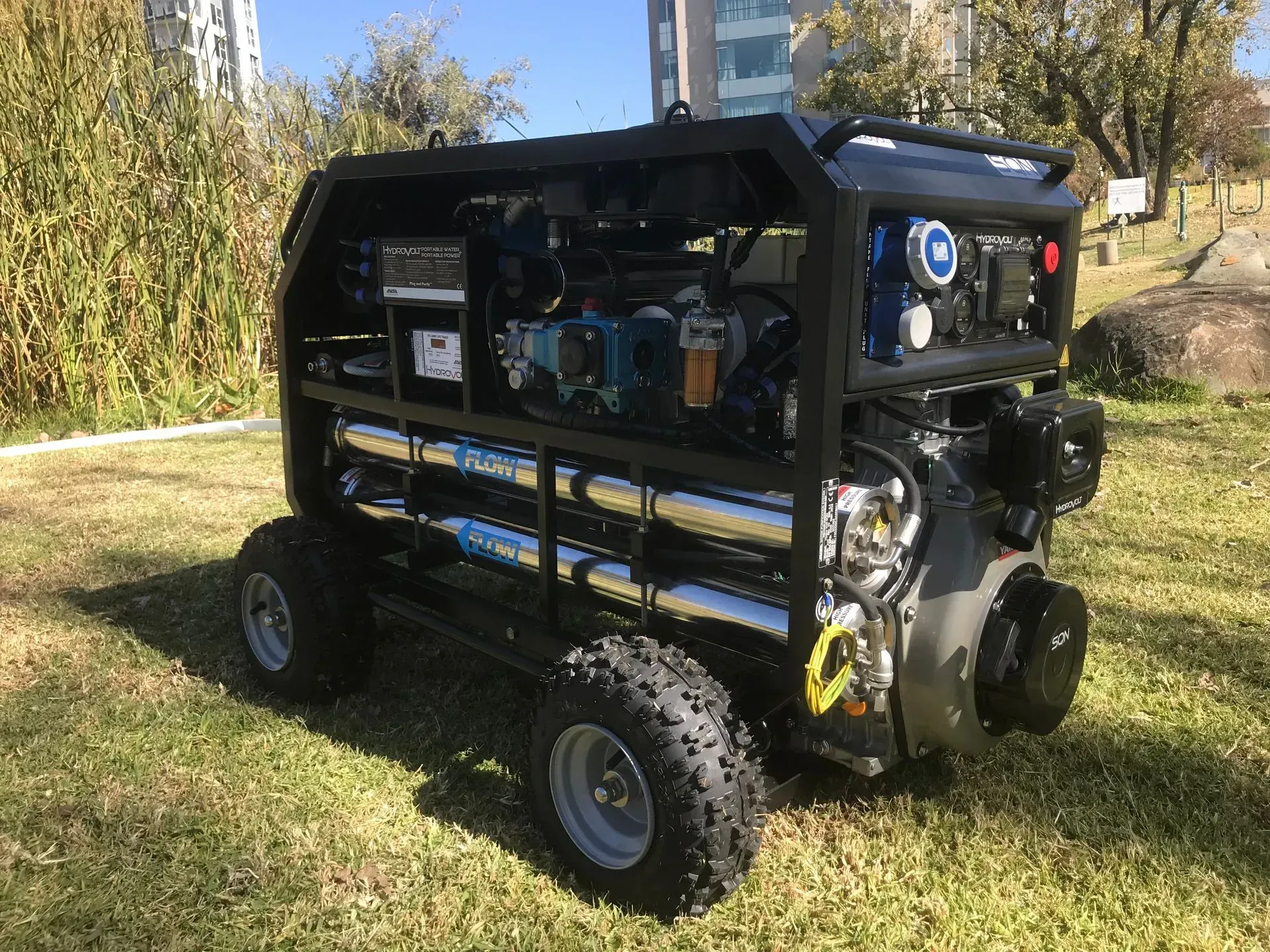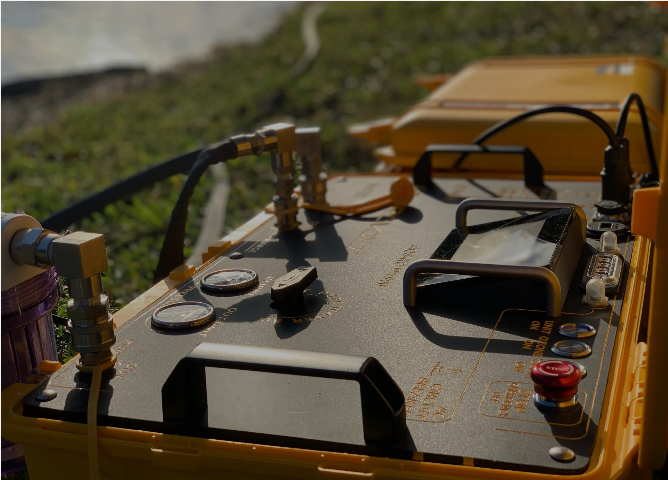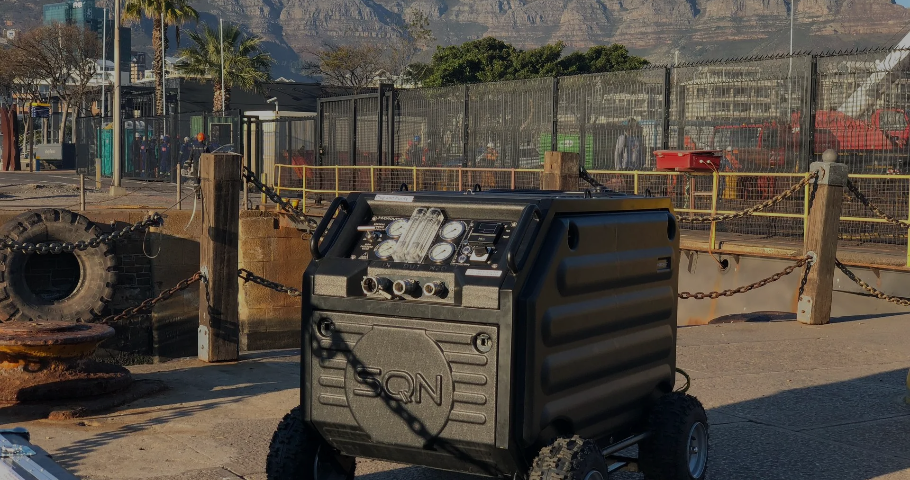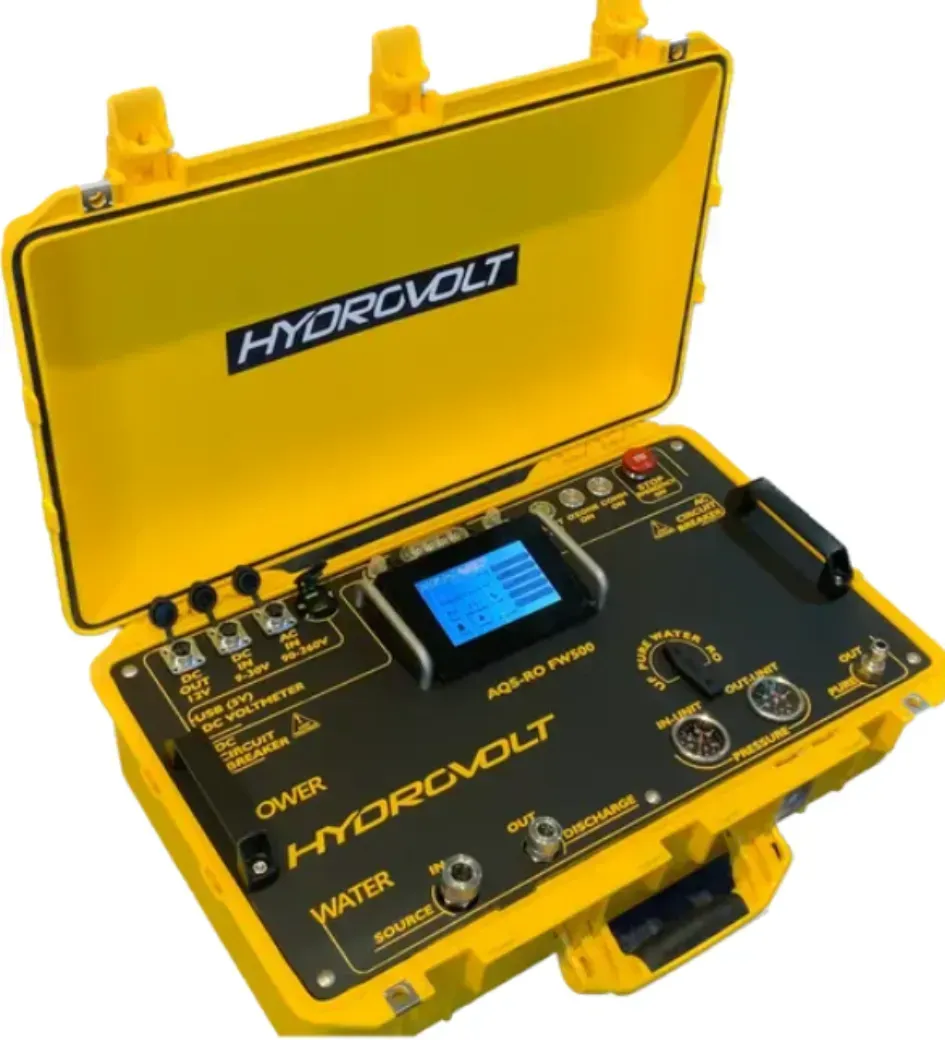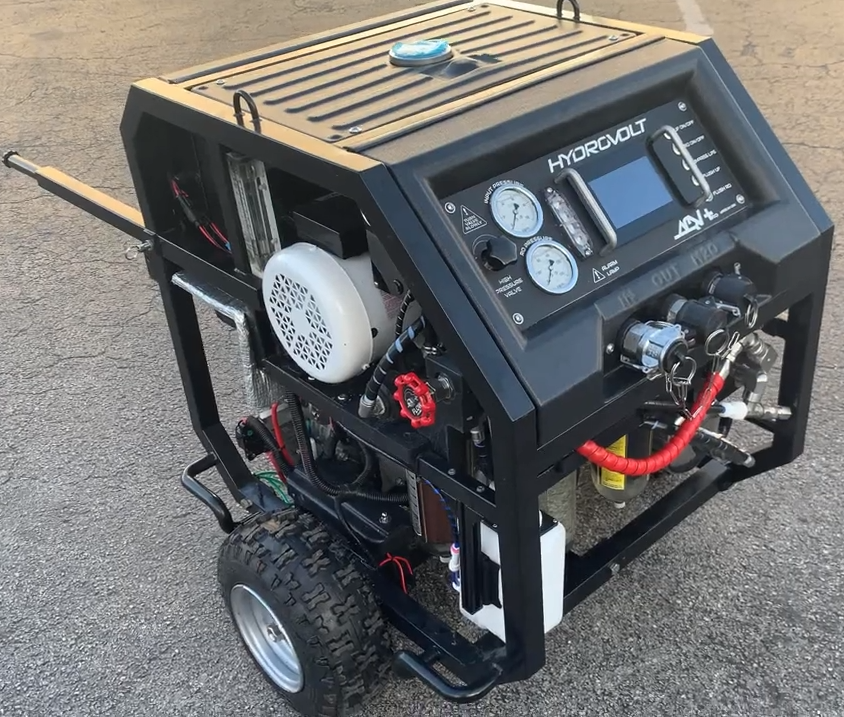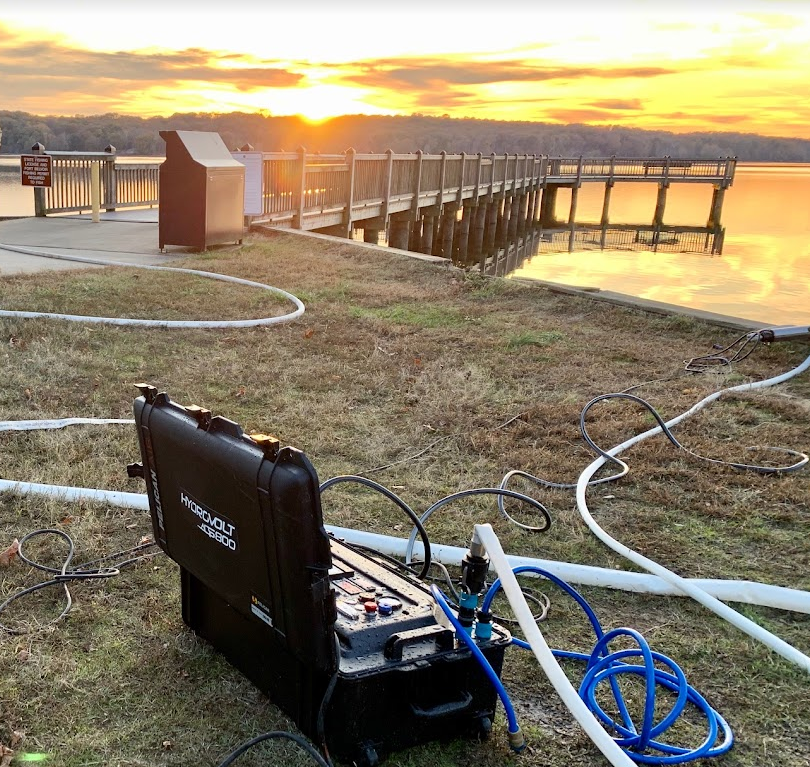HydroVolt: Access to Pure Water. Anywhere. Anytime.
Disaster Mitigation and Response capability at the Community Level.
Certainty. Safety and Freedom.
The Importance of Emergency Water Preparedness: Offer your community a backup plan.
Emergency Water & Power
Provide your community the most timely disaster survival equipment available.
Post Disaster Safety & Resilience
FEMA will eventually arrive with bottled water, but CDC permits the option of emergency water purification.
Water Independence
Your community does not have to wait for aid to arrive to address water needs.
Start Planning Today: Emergency Water Preparedness for Individuals, Hospitals, Hotels, and Communities
Estimated Read Time: 4 minutes
As climate change accelerates, the extreme weather events, such as hurricanes, floods, and droughts, has become more frequent and as recent events show - abnormal, planning for emergency water needs is no longer optional—it’s a necessity, even if you live in a historically safe area. From individuals to entire communities, being prepared with a reliable water supply during a crisis can be life-saving.
This article explores why
emergency water preparedness is critical, the risks of not having a plan in place, and the steps you can take today to ensure water independence. Learn about your options and available solution for securing clean water when disaster strikes.
These events devastate water infrastructure, leading to contaminated supplies, water shortages, and increased demand for emergency resources.
Cities Need to Be Prepared for the Unexpected
With unpredictable weather patterns and rising geopolitical risks, cities must plan for worst-case scenarios. According to the U.S. Environmental Protection Agency (EPA), many cities in the United States face aging and inadequate water systems, which are vulnerable to these extreme weather events. The American Society of Civil Engineers (ASCE) reported that the U.S. drinking water infrastructure received a grade of C- in its 2021 Infrastructure Report Card, highlighting the dire need for modernization and resilience planning. City emergency managers should be able to focus on their communities instead of worrying about access to clean water.
Resilience of water systems against cyberattacks
In 2024, U.S. water infrastructure has increasingly become a target for cyberattacks. Hackers linked to Iran and Russia have exploited vulnerabilities in water and wastewater systems, often by taking advantage of weak passwords and outdated software. In one incident, Iranian hackers breached a Pennsylvania water facility, defacing control systems, while Russian-affiliated groups tampered with water pumps in Texas, disrupting operations. According to the EPA, most of the country’s 150,000 public water systems serve populations under 3,000, which often lack the resources to handle complex cyber threats. These incidents, although did not cause devastating effects, highlight the urgent need for a back up plan.
Why Water Preparedness Matters
Emergencies like hurricanes, floods, earthquakes, and wildfires are on the rise. In 2022, the U.S. experienced 18 major weather and climate disasters, which resulted in widespread damage to infrastructure, including water systems, Hurricane Maria in Puerto Rico left more than 1 million people without access to clean drinking water for weeks. Each year brings more devastation, there are many state of disasters that can be mentioned, all of dire effects that destroy, threaten, bring a plethora of problems. Our Governments, our local governments should have a water back up plan.
The Impact of Disasters on Water Systems
As disasters increase, so do their impacts on water infrastructure. The California wildfires of 2020 not only destroyed homes and businesses but also contaminated water reservoirs, leaving residents and emergency workers struggling to find clean water. According to FEMA, every person should have access to at least one gallon of water per day for drinking and sanitation in an emergency, yet bottled water delivery is often delayed or impossible due to damaged roads. In the recent North Carolina disaster, mules were used to bring water and resources to the affected.
Climate Change and Water Shortages
Climate change is exacerbating water shortages across the globe, with nearly 5 billion people expected to experience water stress by 2050, according to the United Nations. In the U.S., states like California and Arizona are already imposing water restrictions due to prolonged droughts, which only emphasize the importance of planning for emergency water needs.
Water Contamination and Health Risks
In addition to water shortages, contamination is a serious risk during disasters. The Texas winter storm of 2021 left millions without access to clean water for weeks due to frozen pipes and malfunctioning treatment plants. Contaminated water can cause outbreaks of waterborne such as cholera and dysentery, which the World Health Organization (WHO) estimates account for 80% of diseases in disaster-stricken areas.
Steps You Can Take to Prepare Today
Preparing for emergency requires both short-term and long-term planning. Here are a few steps you can take today to ensure your family, business, or community is ready for the next disaster:
- Stockpile Bottled Water: FEMA recommends keeping at least a 3-day supply of bottled water per person in your household, or a 2-week supply if possible.
- Identify Local Water Sources: Know where nearby lakes, rivers, or reservoirs are located in case of a long-term water outage.
- Invest in Water Purification Systems: Portable water purification devices like HydroVolt can ensure any water source can be made safe to drink.
- Develop a Community Water Plan: Hospitals, hotels, and local governments should coordinate efforts to provide clean water to the public during emergencies.
- Stay Informed: Subscribe to local weather alerts and disaster warnings to stay updated on any potential threats to your water supply.
HydrEvolve: A Vision to Empower Communities with Emergency Water Solution and Water Independence
As you plan for future emergencies, consider HydroVolt’s emergency water purification and desalination systems as your self-reliance tool. The original idea, the aim was to create a unit that is easy to use, rapid in deployment, a unit that can purify any water source, no matter if fresh or ocean water.
The HydroVolt units have been
rigorously tested and validated in distant and difficult deployments after natural disasters for
over a decade. They are designed and manufactured for austere environments, created by three founders from Florida after a hurricane in 2005, it was a long process to build reliable, sustainable and efficient equipment as well as manufacturing partnership that built specialized components, since no other company built similar or comparable units.
Finally since an organization, outside the US military, used water systems to help those affected by the recent hurricane caused floodings in North Carolina, we have a precedence to bring our
solutions to the American citizens.
Whether you’re an individual preparing your household, a hospital securing your water supply, or a community seeking sustainable solutions, do your research and chose the most robust, reliable water purification technology available. Our HydroVolt has been tested and proven, we needed the experience and time so that you can be confident that your water supply will be secure, no matter the situation.
HydroVolt Units: Quality and Dependable Water Systems for Individuals, Communities, Cities, Hospitals, Hotels, NGOs and Emergency Responders - these units saved lives.
Our innovative water filtration systems, like the HydroVolt AQS are designed to function in the most challenging environments, sealed in a Pelican Case, a portable solution that can purify, monitor the drinking water and communicate with the operator remotely.
HydroVolt’s products offer portability, reliability, and ease of use, making them ideal for easy transport and quick deployment. With the ability to filter and desalinate up to thousands of gallons of water per day (amounts depend on unit), these systems ensure uninterrupted water access even during major disasters. Whether it’s a flooded urban center or a rural hospital dealing with contaminated water, HydroVolt’s solutions are designed to meet the demands of different-scale operations.
The HydroVolt SQN was tested in field hospitals, after both natural disasters and in war zones. It provides reliable, clean water for surgeries, patient hygiene, and even sterilization of medical equipment. The rugged design ensures that the system can be rapidly deployed, easily maintained and remotely monitored, making it an essential asset for any emergency preparedness plan. The ability to filter, desalinate, and monitor water remotely ensures that cities, communities are better prepared for whatever crisis may come.
Start planning today—your future water security depends on it.
Sources:
EPA – Cybersecurity and Water Resilience
American Society of Civil Engineers (ASCE) – 2021 Infrastructure Report Card
POLITICO – Iranian Hackers Target U.S. Water Utilities
ASIS Online –
Biden Administration's Water Security Warning
CDC -
Emergency Water Supply Alternatives
NOAA National Centers for Environmental Information – U.S. Billion-Dollar Weather and Climate Disasters
The Guardian – Hurricane Maria’s Water Crisis
EPA – Hurricane Harvey Water Contamination
California Department of Water Resources – California Wildfires and Water Supply
FEMA – Water Preparedness Guidelines
United Nations World Water Development Report 2021 –
Water Stress Predictions
World Research Institute -
Water Stress
Texas Tribune – Texas Winter Storm Water Crisis
Ciottone's Disaster Medicine – 59 Infectious Disease in a Disaster Zone
World Health Organization (WHO) – Waterborne Diseases in Disaster Zones
A Solution for your Community
Hurricane Season, Earthquake, or unexpected water shortage from any other potential reason can cause a tremendous stress on the strongest and most vulnerable neighborhoods and or communities.
A New Tool for your Disaster Mitigation & Relief Plan
According to the Obama
National Preparedness Directive
from 2011: Our preparedness "is the
shared responsibility of all levels of government, the private and nonprofit sectors,
and individual citizens."
Resource Allocation
Resource allocation during emergencies is typically based on the severity of the situation and the number of lives at risk.
Self-reliance emphasizes emergency preparedness, highlighting the importance of understanding potential emergencies and creating response plans.
This approach, combined with community and individual preparedness efforts, enhances resilience against diverse emergencies, ensuring that both urban and rural areas can effectively manage risks with minimal external aid. This strategy supports quicker responses and recovery, promoting national and individual sustainability and safety.

